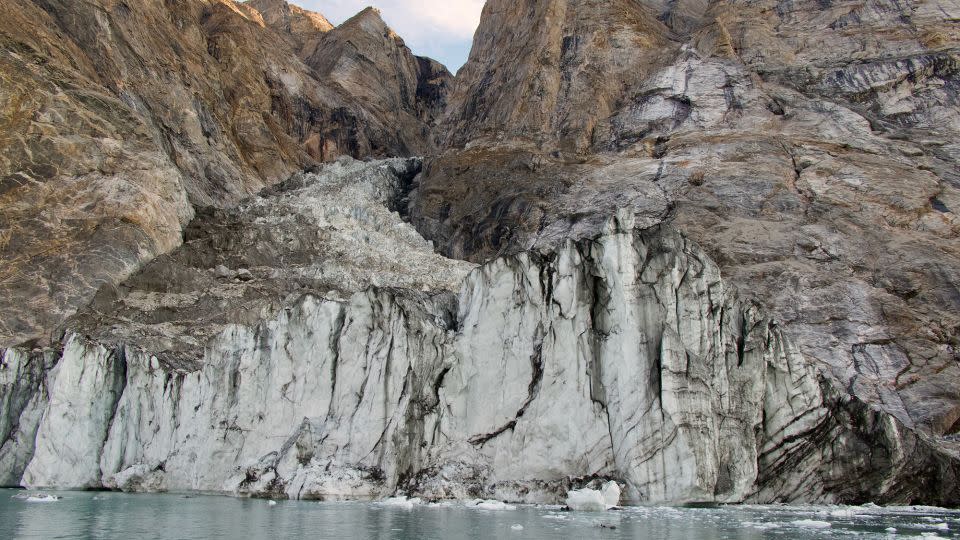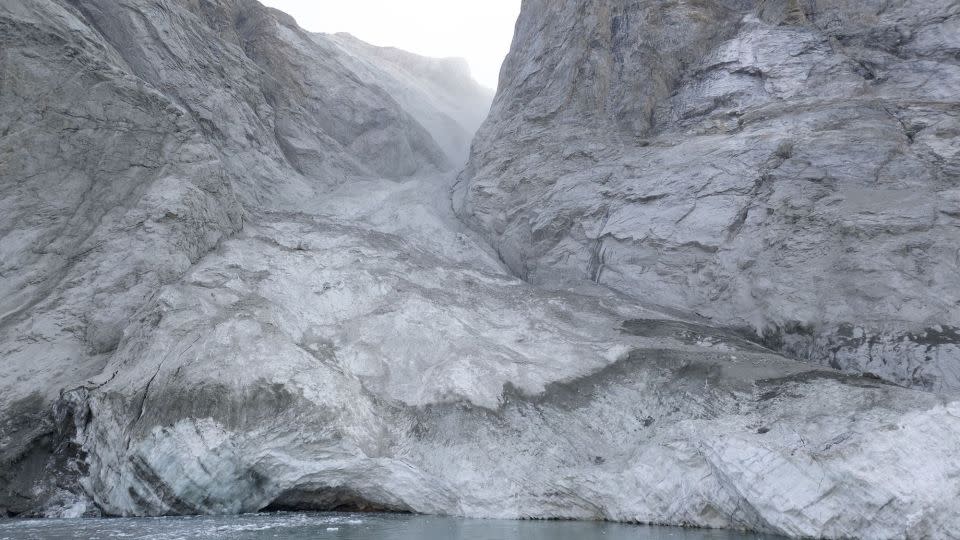It started with a melting glacier that set off a huge landslide, which triggered a 650-foot high mega-tsunami in Greenland last September. Then came something inexplicable: a mysterious vibration that shook the planet for nine days.
Over the past year, dozens of scientists across the world have been trying to figure out what this signal was.
Now they have an answer, according to a new study in the journal Science, and it provides yet another warning that the Arctic is entering “uncharted waters” as humans push global temperatures ever upwards.
Some seismologists thought their instruments were broken when they started picking up vibrations through the ground back in September, said Stephen Hicks, a study co-author and a seismologist at University College London.
It wasn’t the rich orchestra of high pitches and rumbles you might expect with an earthquake, but more of a monotonous hum, he told CNN. Earthquake signals tend to last for minutes; this one lasted for nine days.
He was baffled, it was “completely unprecedented,” he said.
Seismologists traced the signal to eastern Greenland, but couldn’t pin down a specific location. So they contacted colleagues in Denmark, who had received reports of a landslide-triggered tsunami in a remote part of the region called Dickson Fjord.
The result was a nearly year-long collaboration between 68 scientists across 15 countries, who combed through seismic, satellite and on-the-ground data, as well as simulations of tsunami waves to solve the puzzle.




What happened is called a “cascading hazard,” Svennevig said, and it all started with human-caused climate change.
For years, the glacier at the base of a huge mountain towering nearly 4,000 feet above Dickson Fjord had been melting, as many glaciers are in the rapidly warming Arctic.
As the glacier thinned, the mountain became increasingly unstable before it eventually collapsed on September 16 last year, sending enough rock and debris tumbling into the water to fill 10,000 Olympic-sized swimming pools.
The subsequent mega-tsunami — one of the highest in recent history — set off a wave which became trapped in the bendy, narrow fjord for more than a week, sloshing back and forth every 90 seconds.
The phenomenon, called a “seiche,” refers to the rhythmic movement of a wave in an enclosed space, similar to water splashing backwards and forwards in a bathtub or cup. One of the scientists even tried (and failed) to recreate the impact in their own bathtub.
While seiches are well-known, scientists previously had no idea they could last so long.
“Had I suggested a year ago that a seiche could persist for nine days, people would shake their heads and say that’s impossible,” said Svennevig, who likened the discovery to suddenly finding a new color in a rainbow.
It was this seiche that created the seismic energy in the Earth’s crust, the scientists found.
It is maybe the first time scientists have directly observed the impact of climate change “on the ground beneath our feet,” said Hicks. And no place was immune; the signal traveled from Greenland to Antarctica in about an hour, he added.
No one was injured in the tsunami, although it washed away centuries-old cultural heritage sites and damaged an empty military base. But this stretch of water is on a commonly used cruise ship route. If one had been there at the time, “the consequences would have been devastating,” the study’s authors wrote.
Eastern Greenland had never experienced a landslide and tsunami like this before, Svennevig said. It shows new areas of the Arctic are “coming online” for these kinds of climate events, he added.
As the Arctic continues to warm — over the past few decades, the region has warmed four times faster than the rest of the world — landslide-triggered mega-tsunamis may become more common and with deadly consequences.
In June 2017, a tsunami in northwest Greenland killed four people and washed away houses. The threat goes beyond Greenland, Svennevig said; similar-shaped fjords exist in other regions, including Alaska, parts of Canada and Norway.
What happened in Greenland last September “once again demonstrates the ongoing destabilization of large mountain slopes in the Arctic due to amplified climate warming,” said Paula Snook, a landslide geologist at the Western Norway University of Applied Sciences who was not involved in the study.
Recent rock avalanches in the Arctic as well as in Alpine regions, are “an alarming signal,” she told CNN. “We are thawing ground which has been in a cold, frozen state for many thousands of years.”
There’s still a lot of research to be done on rock avalanches, which are also affected by natural processes, cautioned Lena Rubensdotter, a researcher at the Geological Survey of Norway, who was also not involved in the study.
However, she added, it’s “logical to assume that we will see more frequent rock collapses in permafrost slopes as the climate warms in Arctic regions.”
The discovery of natural phenomena behaving in seemingly unnatural ways highlights how this part of the world is changing in unexpected ways, Svennevig said.
“It’s a sign that climate change is pushing these systems into uncharted waters.”
For more CNN news and newsletters create an account at CNN.com
